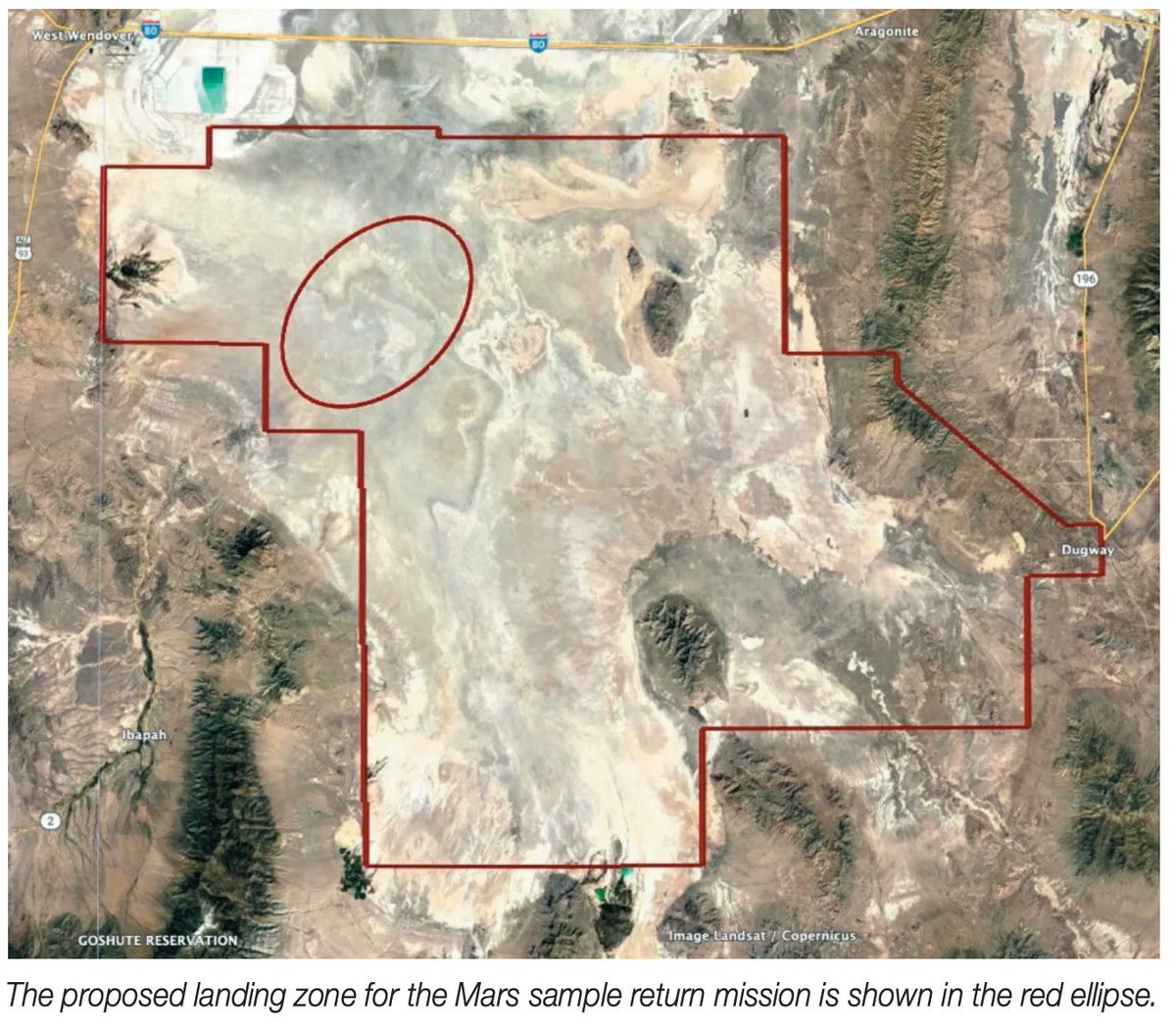NASA’s Mars Sample Return Mission is inching closer and closer. The overall mission architecture just hit a new milestone when Perseverance collected the first sample that will be sent back. But what happens once that sample actually gets here? NASA and its partner, ESA, are still working on that, but recently they released a fact sheet that covers what will happen during the first stage of that process – returning to the ground.
That return will take place in the middle of the desert in the western US, in an area called the Utah Test and Training Range (UTTR). While this may seem like an obscure place to land such an important mission, it does have several things going for it.
First, it’s in the continental US. That gives it relatively easy access to advanced laboratory equipment available throughout the country. NASA is the most likely candidate to be able to marshal all the resources necessary to quarantine the sample to keep it separate from the wider Earth environment, which would help eliminate the (admittedly unlikely) event of a Martian superbug getting on the loose.
Secure containment is one of the reasons the agency is foregoing a water landing. Doing so would lessen the impact on the samples, but it also would have a slight chance that the capsule could sink into the ocean and the tiny bits of Mars within it could be lost to the sea. Avoiding that would be nice, so it’s better to land on land.
But that land has to be isolated, another advantage of the UTTR. Not only is it not near any roads, but it is also already restricted air space, as it is the site of plenty of rocket and plane testing. Being isolated also means that the capsule is less likely to impact anything important if something goes wrong with the trajectory.
That will be particularly important given the method of landing selected for the MSR capsule. It’s going to fall to the ground using only aero-braking – no parachute required. Therefore, it will be going significantly faster than the typical parachute-assisted capsule returns. But, according to NASA’s calculations, the samples and their containers should survive the impact. Not using a parachute will massively simplify the capsule’s design and lessen its weight, both of which are essential factors considering the capsule itself has to return from Mars.

Credit – NASA
Even so, the impact itself is going to make a nice dent in the landscape. NASA has already begun performing testing using a mock-up of the MSR’s sample return capsule. Doing so has created a series of 1.3-meter-wide craters in the landscape and ejected material 15 meters away from the crater.
Assuming the samples and capsule do survive, the next step would be safely transporting them to a laboratory where they can be properly studied. That is, after all, the whole purpose of the Mars Sample Return mission. So far, that part of the program hasn’t been defined yet, but knowing that the samples will end up in the middle of the Utah desert is at least a place to start.
Learn More:
NASA – Utah Test and Training Range: The Proposed Landing Site for Mars Sample Return
UT – This is Where the Mars Sample Return Mission Could be Landing
UT – NASA is Already Designing Hardware for a Mars Sample Return Mission
UT – Perseverance is Searching for the Perfect Landing Spot for the Upcoming Sample Return Mission
Lead Image:
Map of the UTTR, with the planned landing spot for MSR in the red ellipse in the upper left corner.
Credit – NASA


Lets hope this works better than the Genesis Probe whose parachute failed to deploy back in 2004. As they say, falling is easy but landing is hard.
Is it too costly to have it sent to the ISS first?
Will the energy of the impact on landing without a parachute slightly change the chemical nature of the samples?